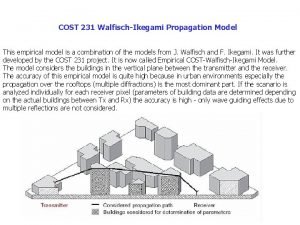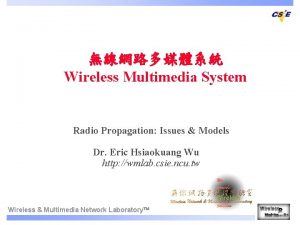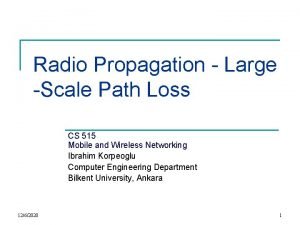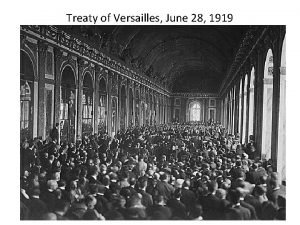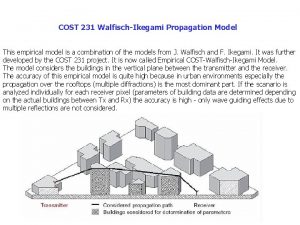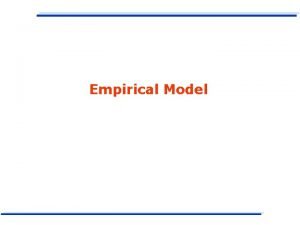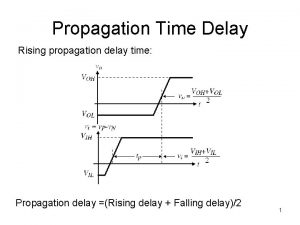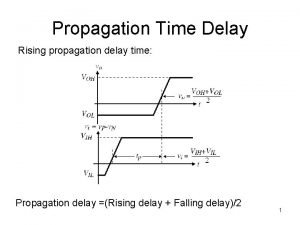COST 231 WalfischIkegami Propagation Model This empirical model





- Slides: 5

COST 231 Walfisch-Ikegami Propagation Model This empirical model is a combination of the models from J. Walfisch and F. Ikegami. It was further developed by the COST 231 project. It is now called Empirical COST-Walfisch-Ikegami Model. The model considers the buildings in the vertical plane between the transmitter and the receiver. The accuracy of this empirical model is quite high because in urban environments especially the propagation over the rooftops (multiple diffractions) is the most dominant part. If the scanario is analyzed individually for each receiver pixel (parameters of building data are determined depending on the actual buildings between Tx and Rx) the accuracy is high - only wave guiding effects due to multiple reflections are not considered.

The main parameters of the model are: Frequency f (800. . . 2000 MHz) Height of the transmitter h. TX (4. . . 50 m) Height of the receiver h. RX (1. . . 3 m) Distance d between transmitter and receiver (20. . . 5000 m) Parameters depending on the buildings in the vertical plane between transmitter and receiver: Mean value of building heights h. ROOF Mean value of widths of streets w Mean value of building separation b

NLOS situation: The loss in the NLOS case is the sum of the free space loss l 0, the multiple screen diffraction loss lmsd and the rooftop-to-street diffraction loss lrts: The free space loss:

The rooftop-to-street diffraction loss term lrts determines the loss which occurs on the wave coupling into the street where the receiver is located. The origin of this loss comes from the Ikegami model, but COST 231 has extended this equation: with The width of the roads w, the rooftop height h. ROOF, the receiver height h. RX and the road orientation φ are the parameters in this equation. The orientation loss l. Ori is an empirical correction term obtained from the calibration with measurements.

An approximation for the multi-screen diffraction loss was published by Walfisch and Bartoni. COST 231 modified this approximation to be used also for base station antenna heights below rooftop level. The building heights h. ROOF and the building separation b are taken into account additionally: with
